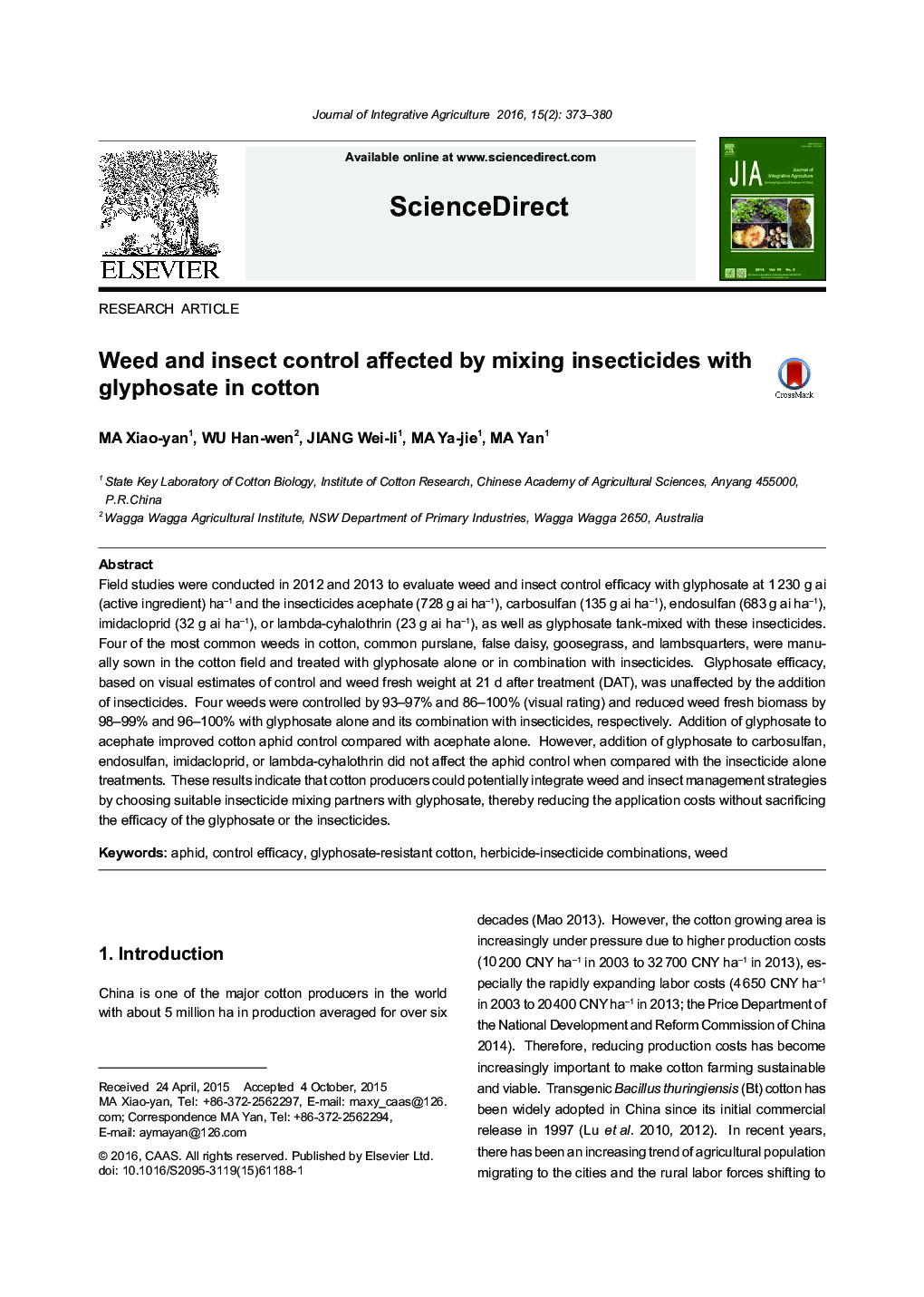| Article ID | Journal | Published Year | Pages | File Type |
|---|---|---|---|---|
| 10180052 | Journal of Integrative Agriculture | 2016 | 8 Pages |
Abstract
Field studies were conducted in 2012 and 2013 to evaluate weed and insect control efficacy with glyphosate at 1 230 g ai (active ingredient) haâ1 and the insecticides acephate (728 g ai haâ1), carbosulfan (135 g ai haâ1), endosulfan (683 g ai haâ1), imidacloprid (32 g ai haâ1), or lambda-cyhalothrin (23 g ai haâ1), as well as glyphosate tank-mixed with these insecticides. Four of the most common weeds in cotton, common purslane, false daisy, goosegrass, and lambsquarters, were manually sown in the cotton field and treated with glyphosate alone or in combination with insecticides. Glyphosate efficacy, based on visual estimates of control and weed fresh weight at 21 d after treatment (DAT), was unaffected by the addition of insecticides. Four weeds were controlled by 93-97% and 86-100% (visual rating) and reduced weed fresh biomass by 98-99% and 96-100% with glyphosate alone and its combination with insecticides, respectively. Addition of glyphosate to acephate improved cotton aphid control compared with acephate alone. However, addition of glyphosate to carbosulfan, endosulfan, imidacloprid, or lambda-cyhalothrin did not affect the aphid control when compared with the insecticide alone treatments. These results indicate that cotton producers could potentially integrate weed and insect management strategies by choosing suitable insecticide mixing partners with glyphosate, thereby reducing the application costs without sacrificing the efficacy of the glyphosate or the insecticides.
Keywords
Related Topics
Life Sciences
Agricultural and Biological Sciences
Agricultural and Biological Sciences (General)
Authors
Xiao-yan MA, Han-wen WU, Wei-li JIANG, Ya-jie MA, Yan MA,
